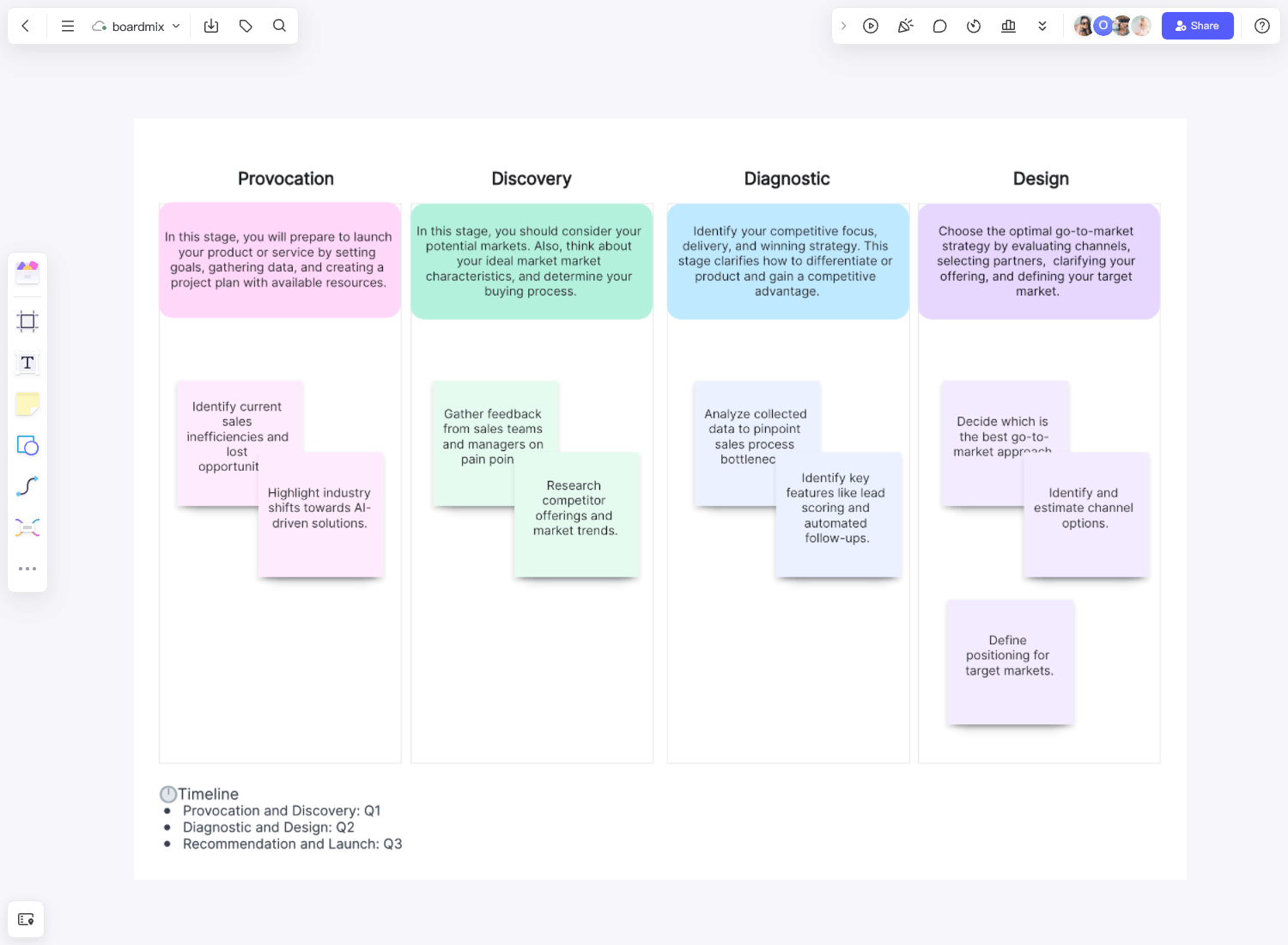Before launching a new product or service, businesses must consider various elements, including brainstorming and research. With a go to market strategy template, you can capture significant data from your study, including insights about the target audience, sales strategy, and marketing plan.
Without proper plans, it will be impossible to know if companies are going for the right customers, are too early or late to a given market, or target markets that are too saturated with the same solutions.
Continue reading this article to learn more about how a go-to strategy template works and where you must use it within the business processes.
What is a go-to-market (GTM) Strategy?
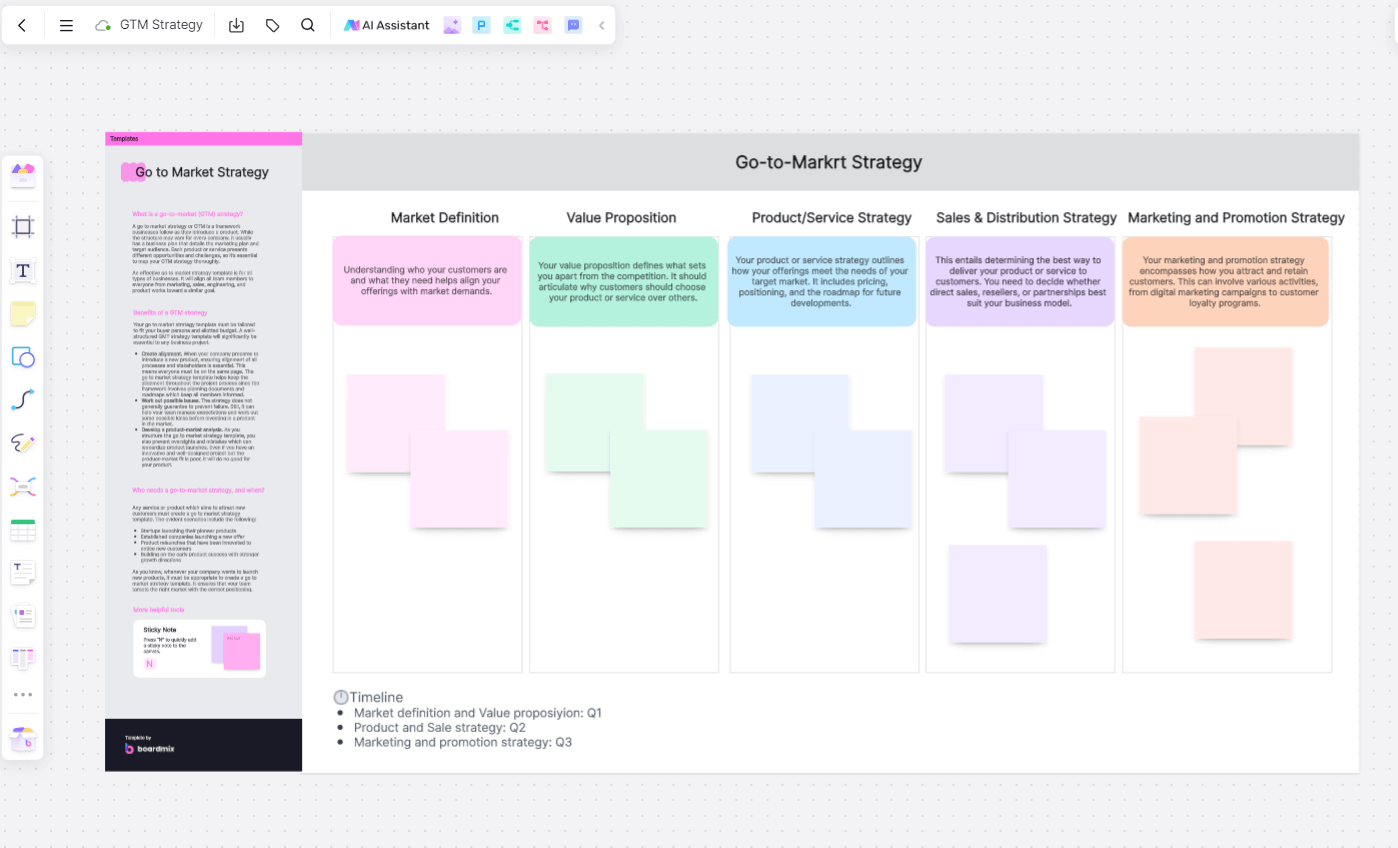
Build Go to Market Strategy for Free
A go to market strategy or GTM is a framework businesses follow as they introduce a product. While the structure may vary for every company, it usually has a business plan that details the marketing plan and target audience. Each product or service presents different opportunities and challenges, so it’s essential to map your GTM strategy thoroughly.
An effective go to market strategy template is for all types of businesses. It will align all team members to everyone from marketing, sales, engineering, and product works toward a similar goal.
Go-to-Market (GTM) Strategy Template
Every successful Go-to-Market (GTM) strategy follows a structured process broadly classified into five stages - Provocation, Discovery, Diagnostic, Design, and Recommendation. To simplify the process, we offer a free template outlining a GTM strategy's critical components.
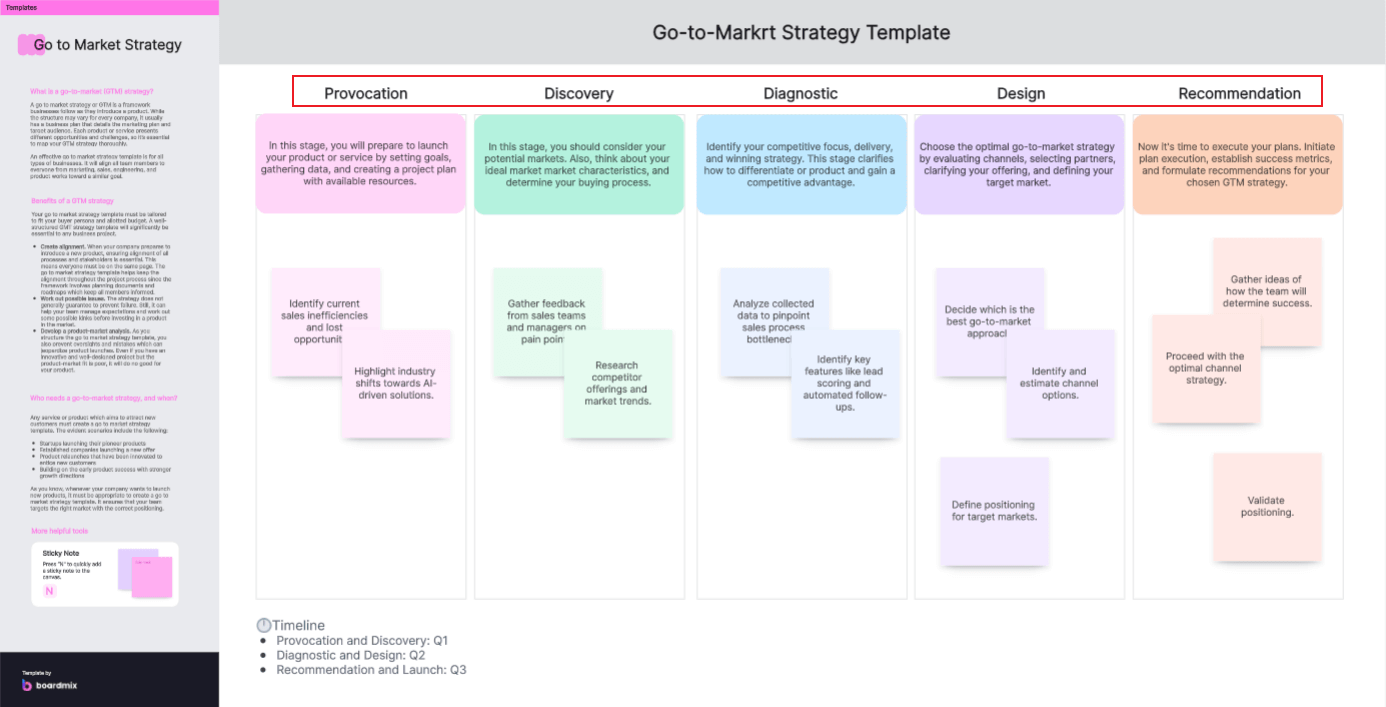
1. Provocation
At the provocation stage, identify an opportunity, need, or issue that triggers the development of a new GTM strategy. This is reflected in the Executive Summary section of our template. Clearly define the product or service, the target market, and the unique selling proposition that will drive your strategy.
2. Discovery
This stage involves gathering necessary data and information about the market and your potential customers. This is covered in the Market Analysis and Customer Persona sections of our template. Analyze market conditions and trends, identify customer segments, and develop detailed customer personas to get a comprehensive understanding of who you are selling to and what their needs are.
3. Diagnostic
During the diagnostic stage, determine the strengths and weaknesses of your current strategies and identify areas for improvement. The Unique Value Proposition section in our template can help you understand what differentiates your product from competitors. In addition, the Sales and Distribution Plan section can assist in diagnosing your current distribution channels and strategies.
4. Design
This is where you start developing the actual GTM strategy. Our template provides sections for Pricing and Positioning Strategy, as well as Marketing Plan. Here, detail your pricing model, how you plan to position your product in the market and elaborate on the marketing strategies you intend to employ.
5. Recommendation
Finally, present your GTM strategy along with anticipated results based on the information gathered and strategies developed in previous stages. In the Financial Projections section of our template, forecast revenues, costs, and profitability associated with implementing your GTM strategy.
Go-to-Market (GTM) Strategy Examples in Boardmix
1. Dissecting a SaaS Go-to-Market Strategy
Developing an effective Software-as-a-Service (SaaS) Go-to-Market (GTM) Strategy can play a vital role in accelerating growth and securing a strong market position. SaaS companies operate in an incredibly dynamic and competitive environment, making a solid GTM strategy critical. We will navigate through the stages of Provocation, Discovery, Diagnostic, Design, and Recommendation in the context of a SaaS GTM strategy.
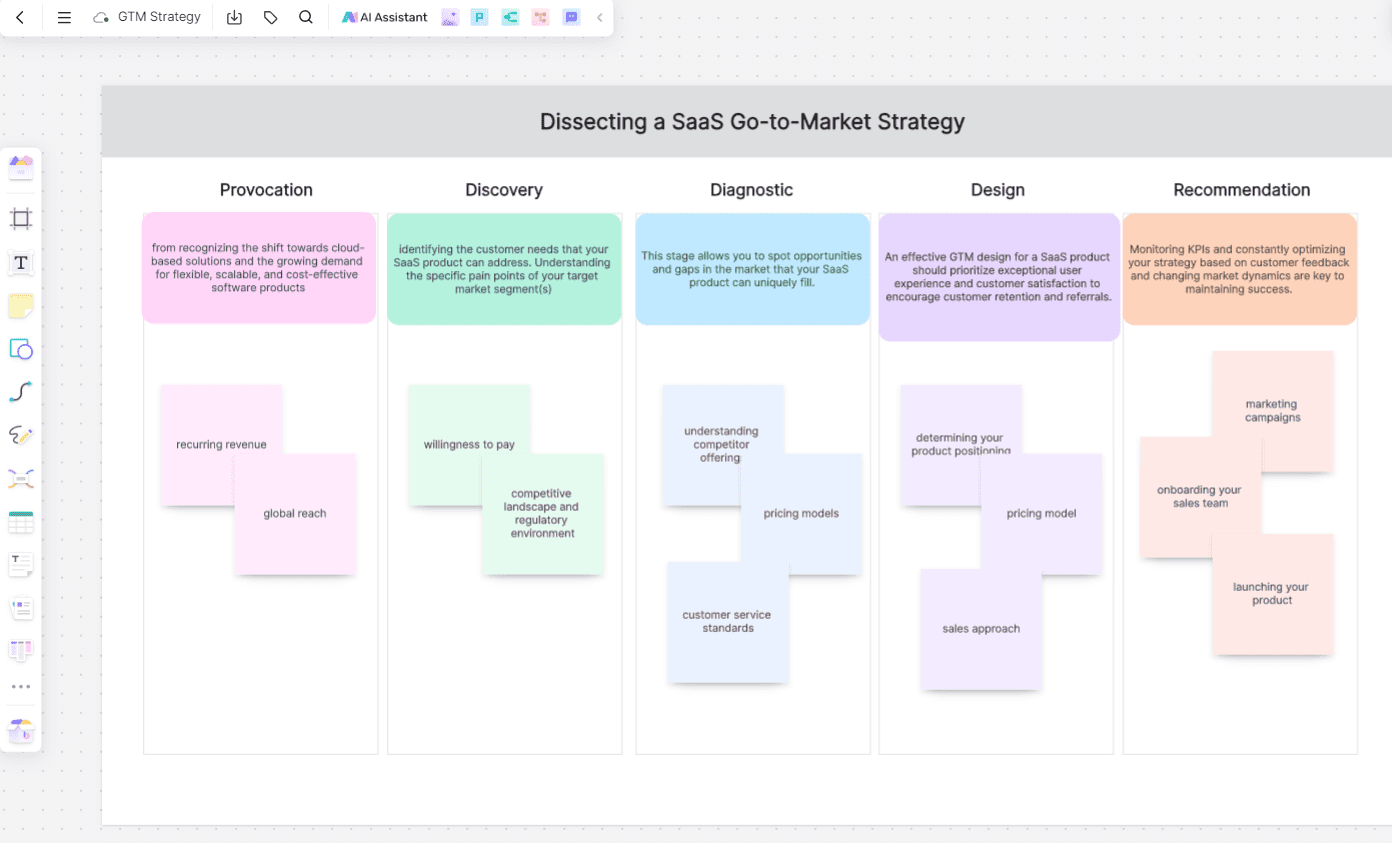
Build Go to Market Strategy for Free
2. Navigating an API Go-to-Market Strategy
Implementing an effective API Go-to-Market (GTM) Strategy can be pivotal in establishing your organization as a player in the software industry. APIs, or Application Programming Interfaces, allow for the interaction of different software components, and their prevalence in modern development has increased their value proposition. Let's walk through a possible GTM strategy for an API product using the five key stages - Provocation, Discovery, Diagnostic, Design, and Recommendation.
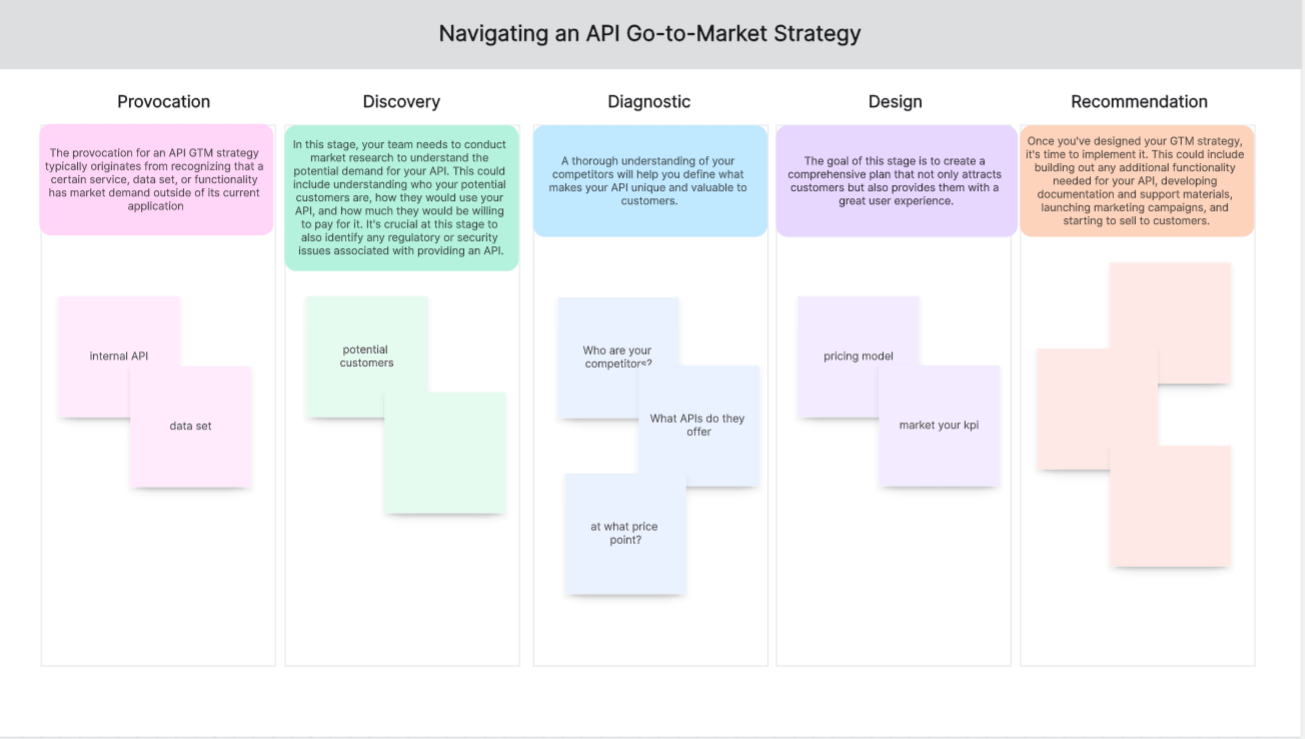
3. Exploring Apple's Go-to-Market Strategy
Apple's Go-to-Market (GTM) Strategy is renowned for its effectiveness and has been instrumental in making Apple one of the most successful and influential tech companies. Let's examine how Apple's GTM strategy can be structured using the five stages - Provocation, Discovery, Diagnostic, Design, and Recommendation.

Build Go to Market Strategy for Free
Benefits of a GTM Strategy
Your go to market strategy template must be tailored to fit your buyer persona and allotted budget. A well-structured GMT strategy template will significantly be essential to any business project.
- Create alignment. When your company prepares to introduce a new product, ensuring alignment of all processes and stakeholders is essential. This means everyone must be on the same page. The go to market strategy template helps keep the alignment throughout the project process since the framework involves planning documents and roadmaps which keep all members informed.
- Work out possible issues. The strategy does not generally guarantee to prevent failure. Still, it can help your team manage expectations and work out some possible kinks before investing in a product in the market.
- Develop a product-market analysis. As you structure the go to market strategy template, you also prevent oversights and mistakes which can jeopardize product launches. Even if you have an innovative and well-designed project but the product-market fit is poor, it will do no good for your product.
Who needs a go-to-market Strategy, and when?
Any service or product which aims to attract new customers must create a go to market strategy template. The evident scenarios include the following:
- Startups launching their pioneer products
- Established companies launching a new offer
- Product relaunches that have been innovated to entice new customers
- Building on the early product success with stronger growth directions
As you know, whenever your company wants to launch new products, it must be appropriate to create a go to market strategy template. It ensures that your team targets the right market with the correct positioning.
How to Build a GTM Strategy?
Creating a comprehensive Go-to-Market strategy requires a thoughtful approach. Fortunately, Boardmix provides an intuitive platform where you can outline, organize, and collaborate on your GTM strategy. Below is a step-by-step guide:
Step 1: Set Up Your GTM Project
After logging into your Boardmix account, navigate to the "New Project" tab and start a new project for your GTM strategy. Give it an identifiable name that reflects the business idea or product you plan to launch.
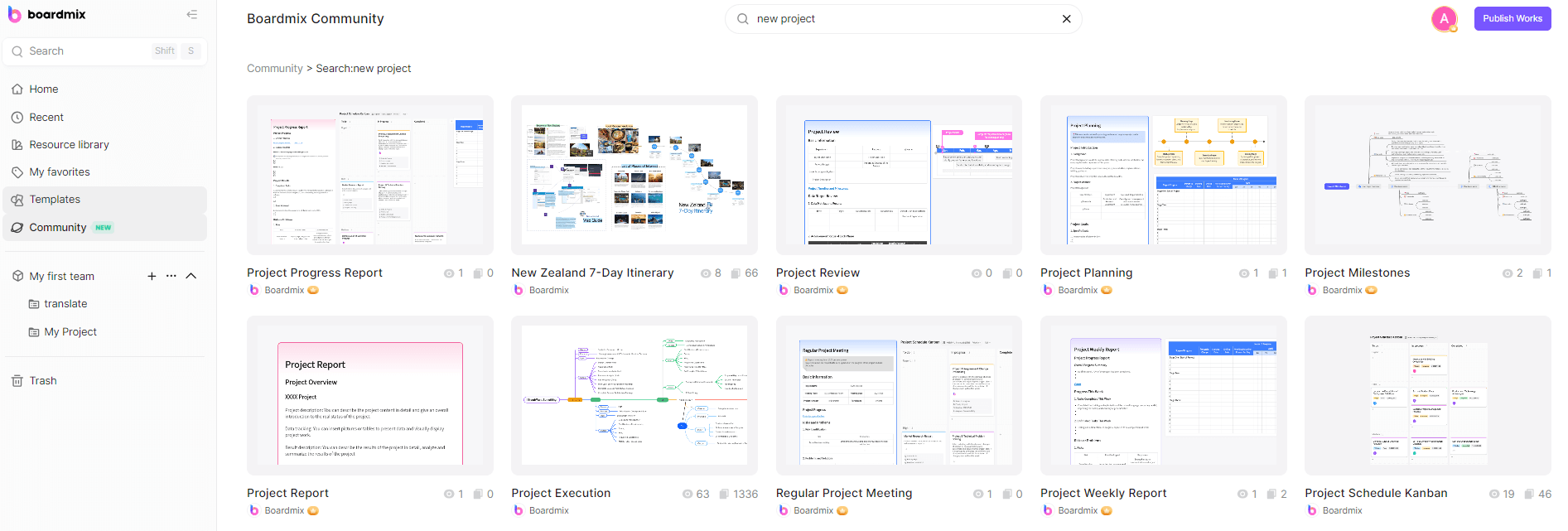
Step 2: Create Boards for Key GTM Components
In your project, create separate boards for each key component of your GTM strategy. To start quickly, you can use the Go-to-Market Strategy template in the diagram library for free.
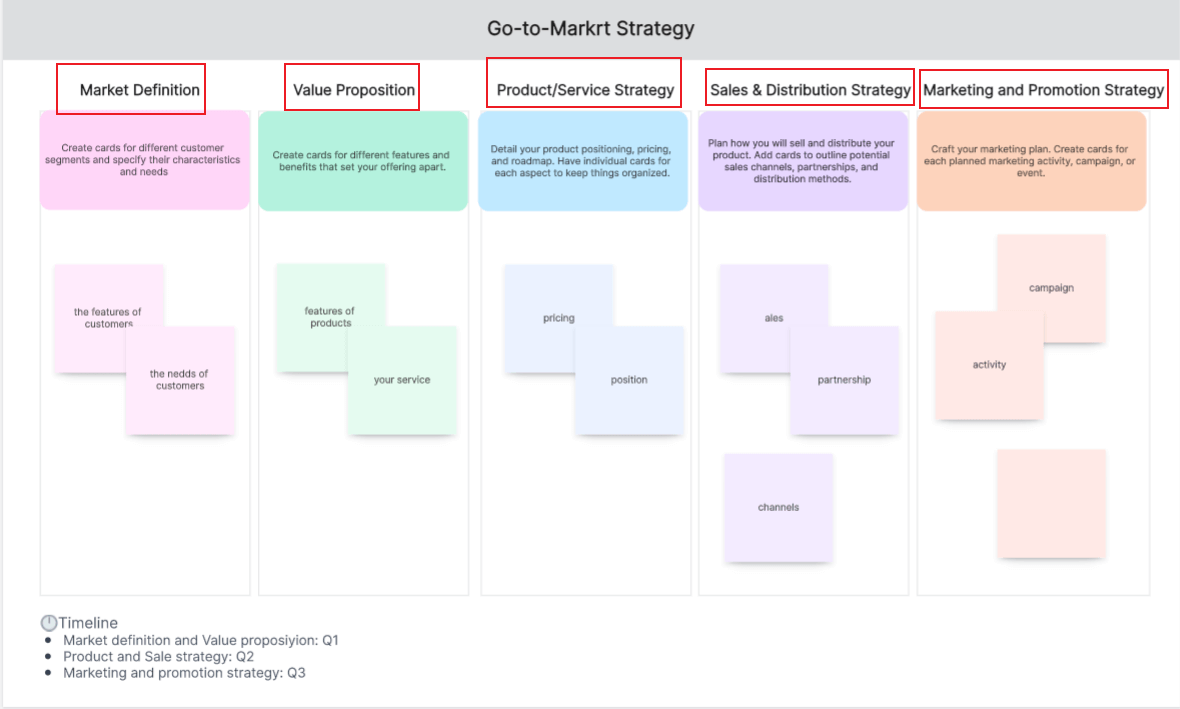
- Market Definition: Identify your target customers and their needs. Create cards for different customer segments and specify their characteristics and needs.
- Value Proposition: Highlight what makes your product or service unique. Create cards for different features and benefits that set your offering apart.
- Product/Service Strategy: Detail your product positioning, pricing, and roadmap. Have individual cards for each aspect to keep things organized.
- Sales & Distribution Strategy: Plan how you will sell and distribute your product. Add cards to outline potential sales channels, partnerships, and distribution methods.
- Marketing & Promotion Strategy: Craft your marketing plan. Create cards for each planned marketing activity, campaign, or event.
Step 3: Add Details to Each Card
For each card you create, add further details in the description or comment section. These details might include timelines, responsibilities, metrics for success, and any other relevant information.
Step 4: Invite Your Team to Collaborate
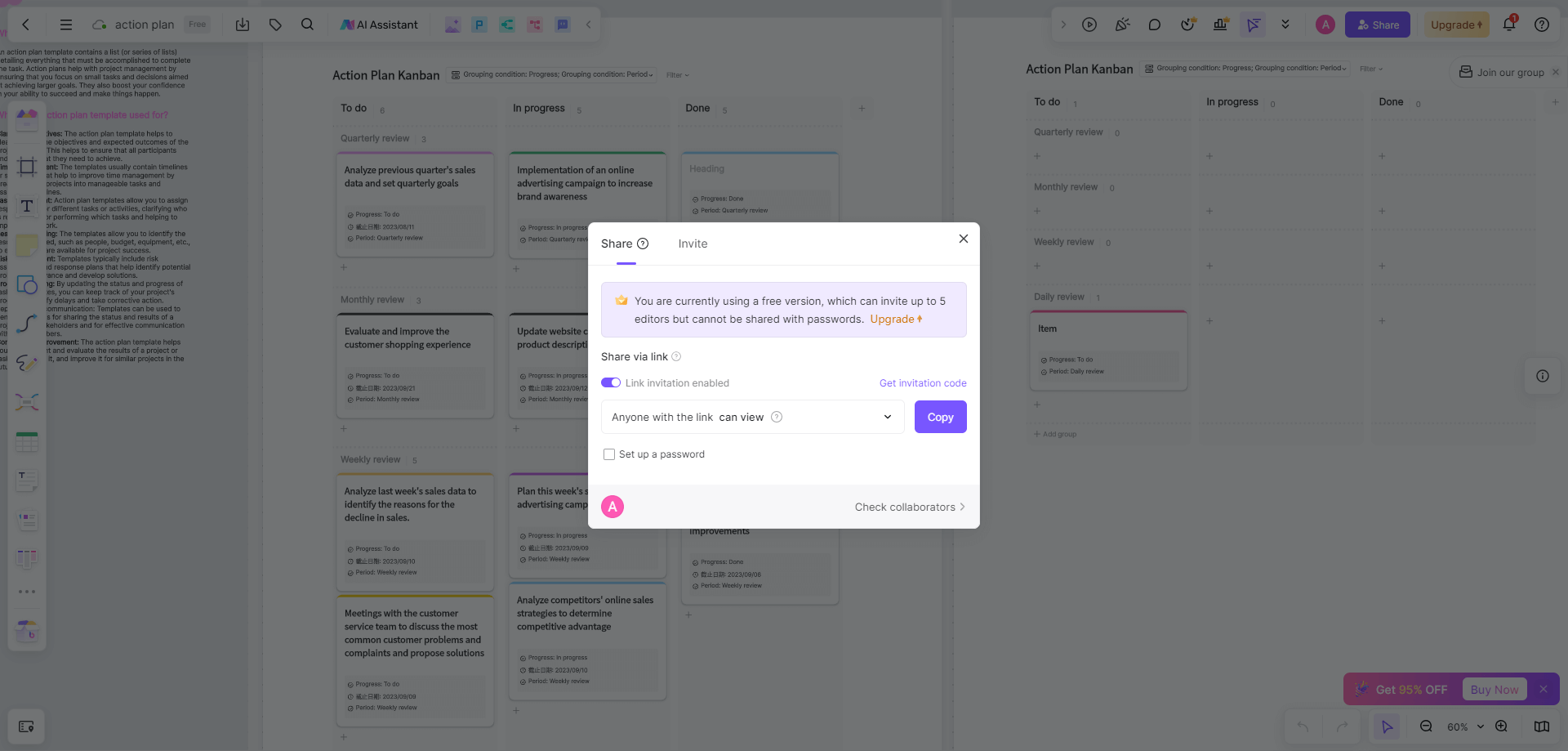
If you're working with a team, use Boardmix's collaboration features. Invite your team members to view, comment on, or edit your GTM project by clicking on the "Invite" button and entering their email addresses.
Step 5: Review and Refine
Continually review and refine your GTM strategy as you get feedback from your team and gain more insights. Use Boardmix's easy editing features to make any updates or adjustments.
FAQ about the GTM strategy
What are the different types of GTM?
You must consider two types of GTMs when working on your go to market strategy. This includes the sales-led GTM strategies, which generally use marketing to create interest in a product through a demo or content forms. Meanwhile, a product-led GTM strategy utilizes the product to secure and retain customers. Each type will have different processes on your go to market strategy template, so it pays to brainstorm this with your team before developing the framework.


